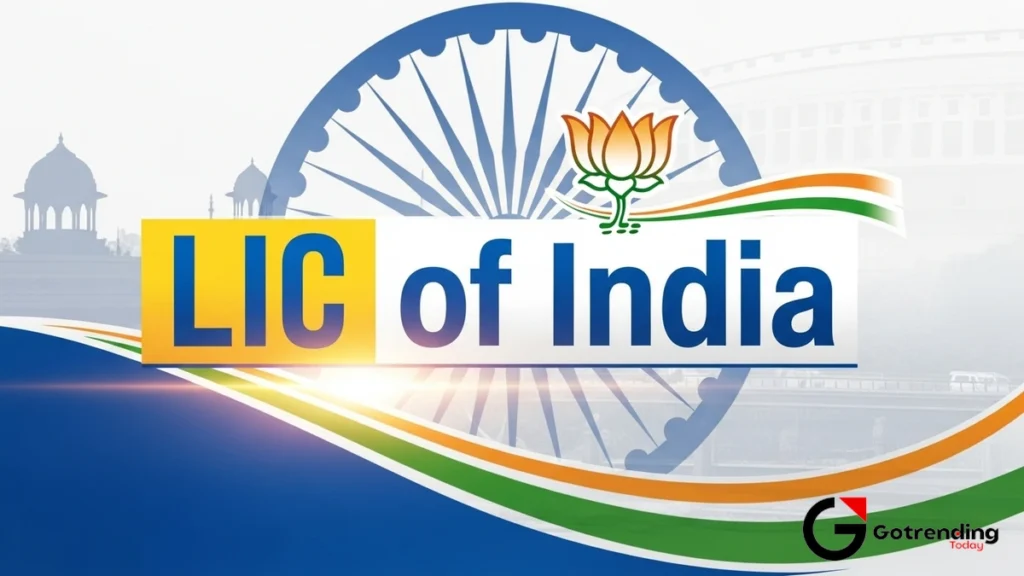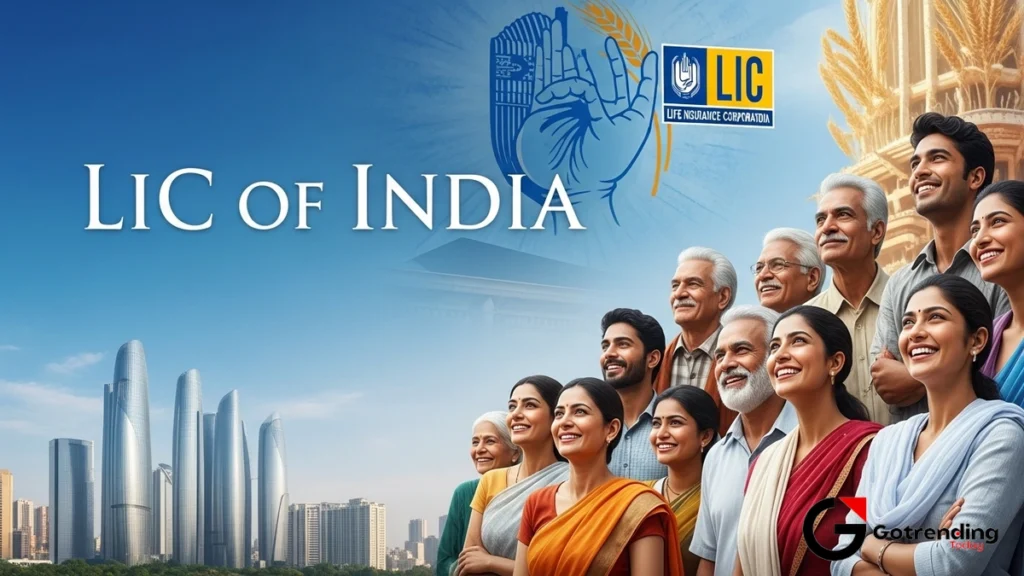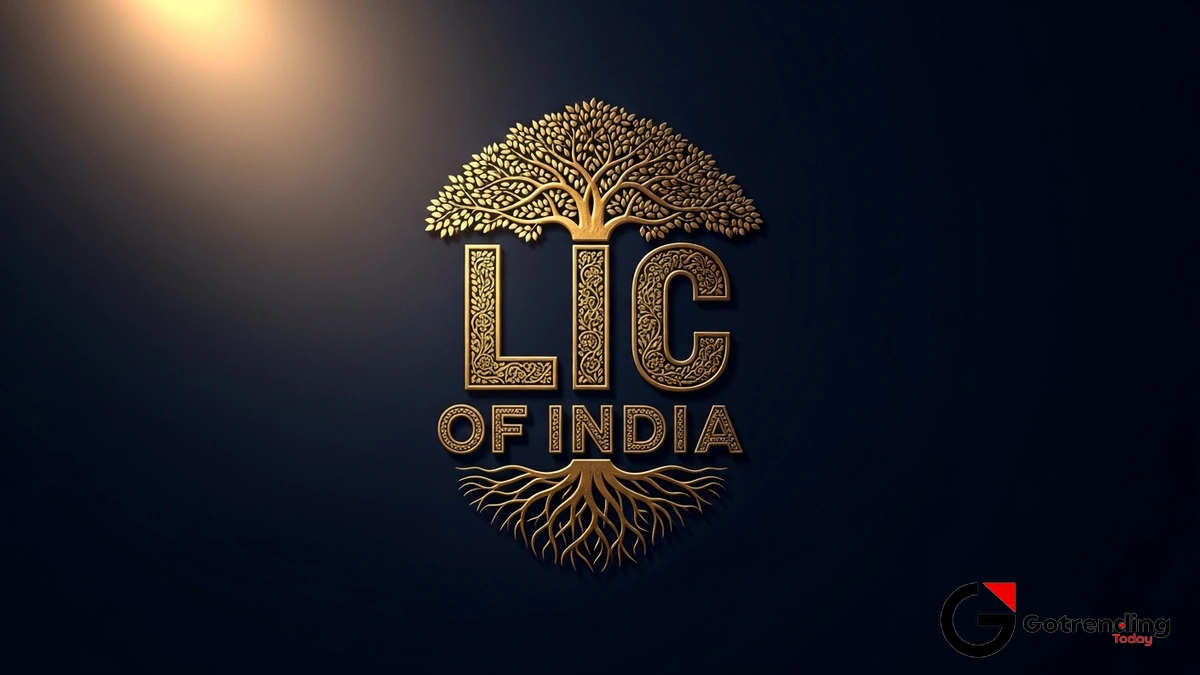The Elephant in Every Indian Living Room | A Real Talk About LIC
You’ve seen it, right? Tucked away in a corner of your local kirana store, hanging crookedly in a doctor’s waiting room, or maybe even laminated and pristine on your father’s desk. That iconic LIC calendar. The one with the two hands cradling a flame, a symbol so deeply embedded in the Indian psyche it might as well be part of our DNA.
For decades, the Life Insurance Corporation of India wasn’t just a company. It was a promise. A silent, ever-present guardian in the middle-class home. The default answer to the question, “What about the future?” It’s the financial equivalent of a pressure cooker every household had one, and you just trusted it to do its job. But here’s the thing. In a world of fintech startups, cryptocurrencies, and mutual funds being advertised during every single cricket match, does this gentle giant still matter?
I’ve been thinking about this a lot. It’s a bit like wondering about the future of a beloved Bollywood star, the anticipation is almost as intense as waiting for War 2 movie updates . Let’s pull back the curtain on the LIC of India , not as a financial advisor would, but as someone who grew up in its shadow.
So, What Exactly Is This Behemoth Called LIC?

On paper, it’s simple. The Life Insurance Corporation of India was formed in 1956 when the government nationalized the country’s entire insurance industry. The mission was noble: spread the message of life insurance far and wide, from the bustling lanes of Mumbai to the remotest villages, and channel people’s savings into nation-building. And boy, did they succeed.
But that description feels… sterile. It doesn’t capture the sheer scale of it. LIC isn’t just a company; it’s a financial ecosystem. It’s the lender of last resort for the government, a massive investor in the stock market, and the silent funder of so much of the infrastructure we use every day. To call it just an insurance provider is like calling the Indian Railways just a train service. It misses the point entirely.
Its power came from one person: the LIC agent . This wasn’t some faceless corporate drone. This was probably your uncle’s friend, a neighbour, or a respected person from the community who’d sit in your living room, drink chai, and patiently explain the virtues of saving. They weren’t just selling a product; they were selling peace of mind. A guarantee. In a country that had seen its share of turmoil, that guarantee was golden.
Decoding the ‘LIC Policy’ | More Than Just Insurance

Here’s something that often gets lost in modern financial discourse. For our parents’ generation, an LIC policy was never just about life insurance. Actually, that was almost a secondary benefit. The real magic was that it was a forced savings vehicle. A piggy bank you couldn’t break.
Think about the legendary plans. The LIC Jeevan Anand , for instance. Its appeal wasn’t just the death benefit. It was the promise of a lump sum at the end of the term. Money for a child’s wedding, for a down payment on a house, for a peaceful retirement. You made your LIC premium payment diligently, year after year, and at the end of it, you got a reward. It perfectly tapped into the Indian mindset of long-term, patient, and above all safe growth. It was slow, steady, and predictable. No drama.
This dual nature is crucial to understanding its legacy. While new-age term plans are technically more efficient for pure life cover, they miss the emotional and psychological comfort that these endowment plans provided. They were a financial instrument, yes, but they were also a cultural one. A testament to a generation that valued security over speculation. The entire Indian insurance sector was, for a long time, defined by this philosophy, a reality well-documented by industry watchers like the India Brand Equity Foundation .
But the world changed. And so, the elephant had to learn a new trick.
The IPO Shake-Up | When the Elephant Learned to Dance

The LIC IPO . It was monumental. The government deciding to list a portion of its crown jewel on the stock market was the biggest financial story in years. Suddenly, this sleepy, state-run giant was being analyzed, scrutinized, and debated on business news channels 24/7. Everyone had an opinion. Should you invest? Was it the deal of a lifetime or a relic of the past?
I’ve got to admit, watching this unfold was fascinating. It forced a national conversation about what LIC is and what it should be. The IPO meant LIC now had to answer to shareholders, report quarterly earnings, and compete on metrics it had long ignored. It was a massive cultural shift. The reliable old uncle was suddenly being asked to show his report card.
The post-IPO performance has been a mixed bag, leading to endless debate. And that’s okay. That’s the market. But what’s more interesting is the underlying tension: can LIC balance its legacy of being a safe, stable behemoth for all of India with the modern market’s demand for aggressive growth and shareholder value? That’s the real story, and it’s still being written. The public discourse around it is almost as varied as you’d find in a Maalik movie review ; everyone sees something different.
Your Burning Questions About LIC, Answered
How do I actually check my LIC policy status online without losing my mind?
Let’s be honest, their website can feel a bit… vintage. The key is to register on their e-Services portal first. You’ll need your policy number, premium amount, and PAN card. Once you’re registered, it’s actually quite straightforward. You can see your policy details, premium due dates, and even loan status. My advice? Do the one-time registration with a cup of coffee and some patience. After that, it’s a breeze.
Is investing in an LIC policy still a good idea today?
This is the million-rupee question. It depends entirely on your goal. If you’re looking for the absolute highest returns and are comfortable with market risks, a mix of mutual funds and pure term insurance might be more efficient. But if you want a disciplined, low-risk way to save for a long-term goal and value the safety of a sovereign guarantee, an LIC policy still holds a unique appeal. It’s less of an “investment” and more of a “commitment to save.”
I keep hearing about Jeevan Anand and Jeevan Labh. What’s the real difference for a normal person?
Think of it this way: Both are savings-plus-protection plans. With Jeevan Anand, the life cover continues even after you get your maturity amount. It’s like the plan has a second life. Jeevan Labh is a limited premium plan, meaning you pay premiums for a shorter period than the policy term (e.g., pay for 16 years, get cover for 25). It’s for people who want to finish their payment liability sooner. The best choice depends on your cash flow and how you view the “life cover after maturity” feature.
Why does everyone’s dad seem to trust LIC so much? Is it just nostalgia?
It’s not just nostalgia, though that’s part of it. The trust comes from its history. For decades, LIC was the only option, and it never failed to pay a claim. It’s backed by the government, which gives it a level of security private players can’t match. So while the returns might not be spectacular, the capital is perceived as 100% safe. In a country where financial scams were not uncommon, this unwavering reliability built a fortress of trust that stands strong even today.
In the end, LIC is a paradox. It’s a bit slow, a bit bureaucratic, and its products aren’t always the flashiest. But it’s also stable, omnipresent, and woven into the very fabric of India’s financial story. It’s the elephant in the living room quiet, powerful, and impossible to ignore. And as it navigates the new world of public markets and digital-first customers, its journey is a reflection of India’s own journey: a balancing act between a deeply respected past and a very different future.













